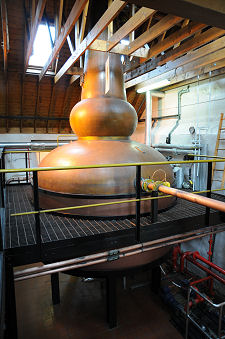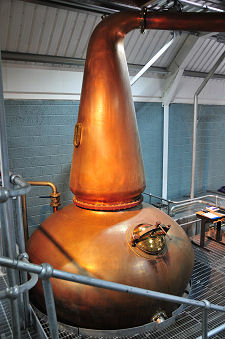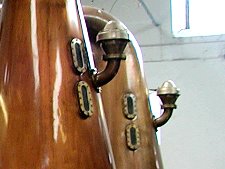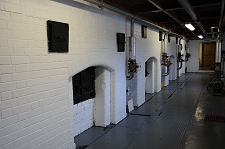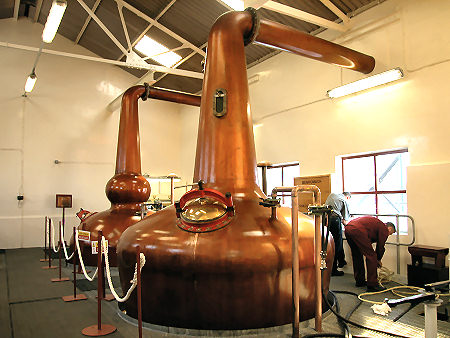 Benromach Distillery's Wash Still |
You will find at least two stills in every distillery, and while you will find many more in some large distilleries, they are almost always divided into two types, the wash still and the spirit still. A few distilleries distill their product more than twice, but the norm is double-distillation and that is the process we describe here.
The raw material for the wash still is the wash from the washback. This is a vaguely beer-like substance full of material from the brewing process and with an alcohol content of around 7-8%. It is pumped into the wash still and heated.
The method of heating varies. Nowadays most stills contain a copper coil through which steam is pumped, though at a few distilleries the old fashioned approach of direct heat from a gas or coal fire is still used. Glenfiddich is one example of this, which explains why their stills seem less pristine and gleaming than most.
The yeast in the wash continues to ferment until stopped by the heat of the still, and contains a fair proportion of solid material. Left to its own devices the solids would burn onto the heating coil or the bottom of the still with undesirable consequences. To prevent this a rummager is used, a device that swirls copper chains within the still to prevent burning. (Continues below image...)
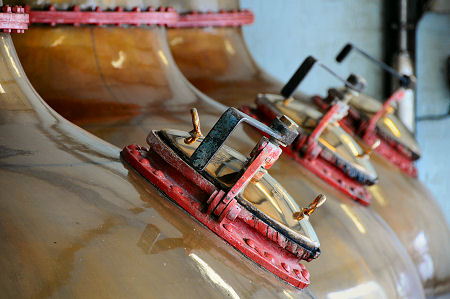 The Wash Stills at Laphroaig Distillery |
The heat is increased to bring the contents of the still to a boil. This is often judged by a pair of windows high on the neck of the still, the idea being to control the heat so the froth from the boiling wash is visible in the lower window but not in the upper window.
The basic principle of all stills is that the alcohols boil at a lower temperature than water. In the wash still the alcohols gradually boil in the still and make their way to its top, and then along the lyne arm, the horizontal(ish) copper arm leading from the top of the still, to the wash condenser, where it is cooled and turned back into a liquid that is sent to the low wines and feints receiver. What is now called low wines has an alcohol content of around 25% by volume.
The process continues until almost all of the alcohol has been given off, and what is emerging from the still is water vapour. The contents of the wash still are pumped out and reduced to a solid, providing a high protein cattle feed, and the wash still is ready for its next batch of wash from the washback.
A distillery's still room is an impressive place, but can also be a confusing one. The stills will all look pretty much alike, but there are four ways to tell the difference between a wash still and a spirit still. The most straightforward is from the signs often hung around the necks of the stills, or in the case of Bowmore, attractively embossed on the sides of the necks. The second is by size. In any given distillery the wash stills will be larger than the spirit stills: as each batch passes through the process the volume is lower in the second than in the first distillation.
The third is more subtle and less reliable: the presence of one or more windows high on the neck is a reasonable indicator of a wash still rather than a spirit still. And the fourth? Well, we've never seen it mentioned, but in many distilleries you will find that the pipe work or the pipe connectors, and sometimes the fixtures and fittings on the outside of the stills, are colour coded.
Red pipes and fittings are associated with wash stills, and bright blue pipes and fixtures and fittings are associated with spirit stills. As this usually passes unremarked, we assume it is more to prevent the wrong bits of pipe being joined together during maintenance than for the benefit of visitors, but it does help understand how the process works in practice.
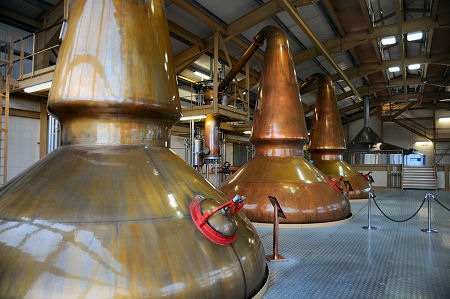 The Wash Stills at Glenlivet Distillery |
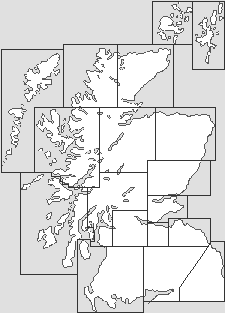
|
|
|
Making Malt Whisky: |
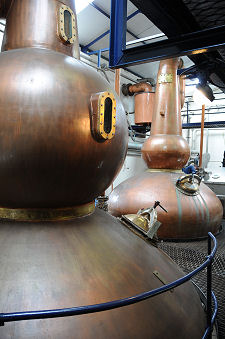 Wash Still, Pulteney |
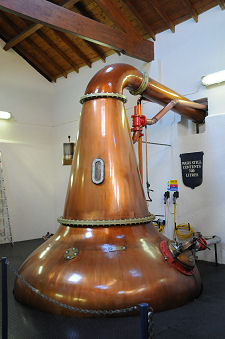 Wash Still, Royal Lochnagar |
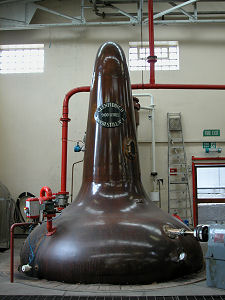 Wash Still, Glenfiddich |
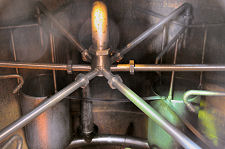 Still Interior, Ben Nevis |
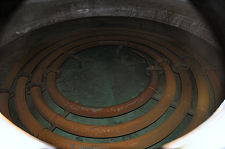 Still Interior, Glenglasshaugh |
